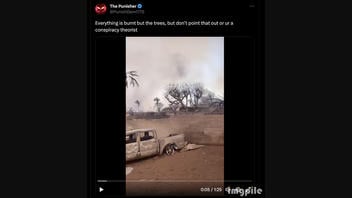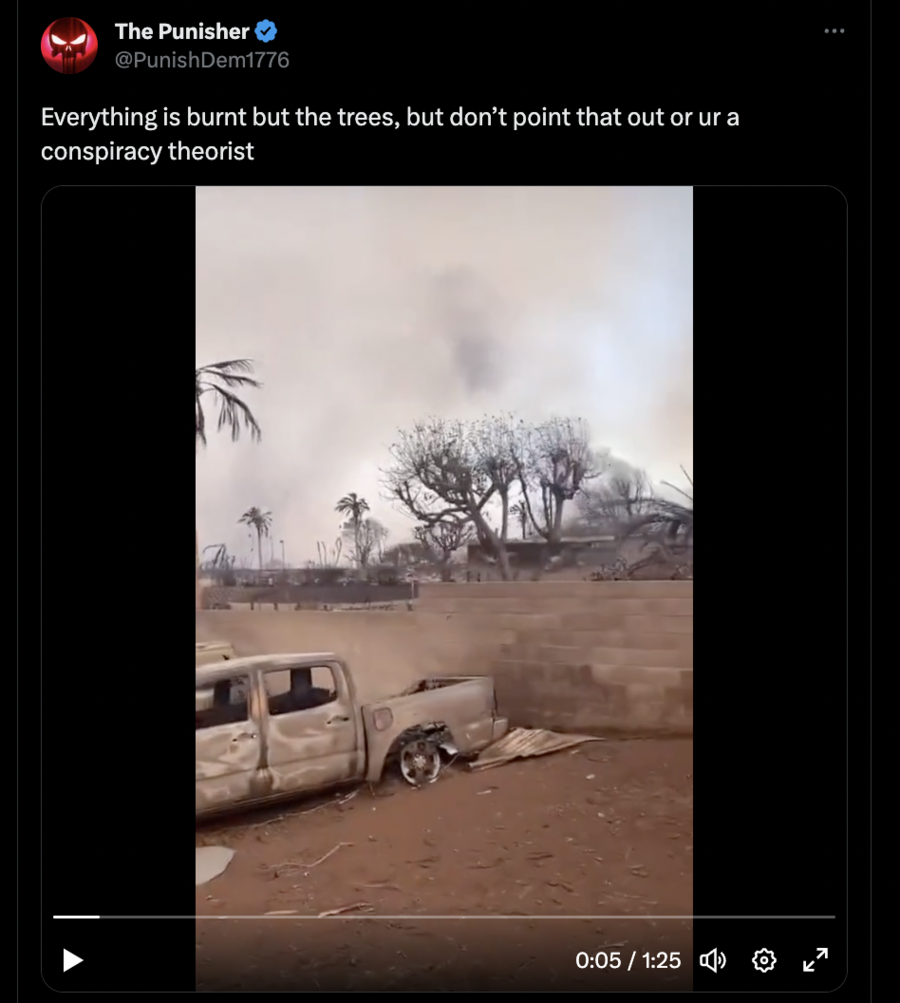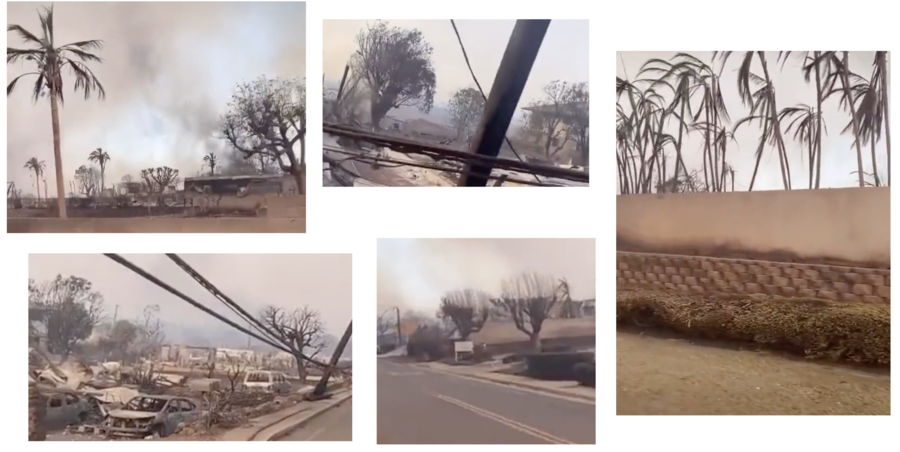
Does a widely shared video of still-standing trees prove that the Maui wildfires were false flag operations? No, that's not true: Social media users who reposted the clip pointed out that some plants survived fires, but that does not support the assertion in question -- plants growing in fire-prone ecosystems naturally evolve with features that allow them to withstand fires.
The claim appeared in a post (archived here) published on X, formerly known as Twitter, on August 11, 2023. It opened:
Everything is burnt but the trees, but don't point that out or ur a conspiracy theorist
This is what it looked like at the time of writing:
(Source: X screenshot taken on Mon Aug 14 15:38:24 2023 UTC)
The post contained a video shot from a moving object that could be a vehicle or a bicycle. It captured debris from destroyed buildings and burnt cars on both sides of the road the camera followed. Trees were also seen there. Many of them didn't have leaves, but some -- mostly palms -- retained the tree crowns at least partially.
Here is a gallery showing a variety of screenshots from the clip, capturing the appearance of the trees:
(Source: X screenshot taken on Mon Aug 14 15:48:25 2023 UTC; X screenshot taken on Mon Aug 14 15:48:50 2023 UTC; X screenshot taken on Mon Aug 14 15:49:13 2023 UTC; X screenshot taken on Mon Aug 14 15:50:20 2023 UTC; X screenshot taken on Mon Aug 14 15:50:03 2023 UTC; composite image by Lead Stories)
However, plants' physical survival during wildfires is one of five well-studied adaptations plants develop in response to this particular environmental challenge.
A summary on the website of U.S. Department of the Interior's Bureau of Land Management explains:
Resisters are the species that can survive moderate to low-intensity fires with little to no damage. Some adaptations of Resisters include: thick bark to shield them from fire; deep roots protected from fire; the shedding of their lower branches to prevent fire from climbing; and moist, short needles or leaves that are hard to burn. Some examples include: ponderosa pine, sugar pine, and Douglas-fir.
Britannica points out:
A tall crown and few to no lower branches is a strategy a number of tree species employ to reduce wildfire damage. In keeping their leaves and vital growth tissues far above the reach of most flames, these trees can often survive a fire with only minor charring to their trunks.
The website of the University of California, Riverside, specifically addresses the question of palm trees' survival:
Palm tree species throughout the planet survive and thrive in a world where there are periodic wildfires. It's in their DNA. As monocots, a broad group including grasses, orchids, agaves, yuccas, and palms, the palm trees' vascular system, the system of moving water and nutrients up and down a stem or trunk, is distributed throughout the palms' trunk. This contrasts with non-monocot (dicot) trees and shrubs where their vascular system is only on the outer edge of the plants' trunk or stem, just below the bark. With ample water flowing throughout a palm's trunk, that water keeps all but the outer edge from being consumed by a fire. The core stays alive.
Besides resisters, there are also four other groups of plants based on the type of their fire adaptations: sprouters, seeders, invaders that take over a burnt area and avoiders that only grew in areas where wildfires are rare.
As of this writing, the Maui wildfires that broke out on August 8, 2023, have become the deadliest natural disaster in the history of Hawaii.
Other Lead Stories fact checks about wildfires can be found here.

















